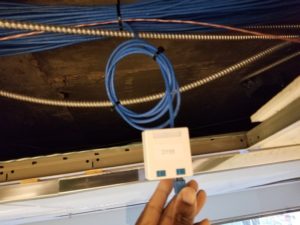
Typical Installation Mistakes of Network Cabling – Part 2
 As discussed in Part 1, network cabling installation errors may result in long-term problems and high costs. They can be avoided by following standard structured cabling practices. Continuing with the discussion of typical network cabling installation mistakes, Part 2 will cover Ignoring Regulations, No Testing, and Skimping On Labor.
As discussed in Part 1, network cabling installation errors may result in long-term problems and high costs. They can be avoided by following standard structured cabling practices. Continuing with the discussion of typical network cabling installation mistakes, Part 2 will cover Ignoring Regulations, No Testing, and Skimping On Labor.
Ignoring Regulations
There are codes, laws, and ordinances that regulate low voltage cabling, and they vary, depending on the municipality, city, and state. Experienced professionals who install network cabling are knowledgeable about the applicable requirements and how to complete a project to code. When the fire marshal or building inspector determines laws were broken or wiring is not up to code, a company can be penalized with large fines and required to remove and reinstall cabling if it is a fire hazard.
No Testing
When network cabling is installed, each cable should undergo testing. This should also involve the verification of a cable’s length and specifications. This process is crucial because it will confirm whether or not the network satisfies project specifications. The data also provides a basis for future testing and troubleshooting, along with supporting any warranty claims.
Skimping On Labor
Considering how important the network cabling installation is to the future, cutting corners in the hiring of cabling installers is unwise. It is crucial to always verify the qualifications and licensing of the cabling installation company you are considering. Make the time and effort to check each reference that is provided. This may save your company time, money, and problems if you avoid working with an outfit that provides substandard services support. Request the contact information of previous customers who had projects similar to yours and get their opinions before making a commitment. Finding an installer that is the right fit for your project is the first step for ensuring a successful network cabling installation.
Progressive Office Cabling
Founded in 1986, Progressive Office’s success has been a direct result of years of commitment to seeking solutions on behalf of our clients in the Washington, D.C. and New York City areas. Efficiently working together, Progressive teams get cabling installed and operating as fast as possible while minimizing disruption and downtime. Call our toll free number (800) 614-4560 today.


 As discussed in Part 1, the improper I can result in poor network performance, maintenance issues, and concealed expenses. Part 2 will discuss four more
As discussed in Part 1, the improper I can result in poor network performance, maintenance issues, and concealed expenses. Part 2 will discuss four more